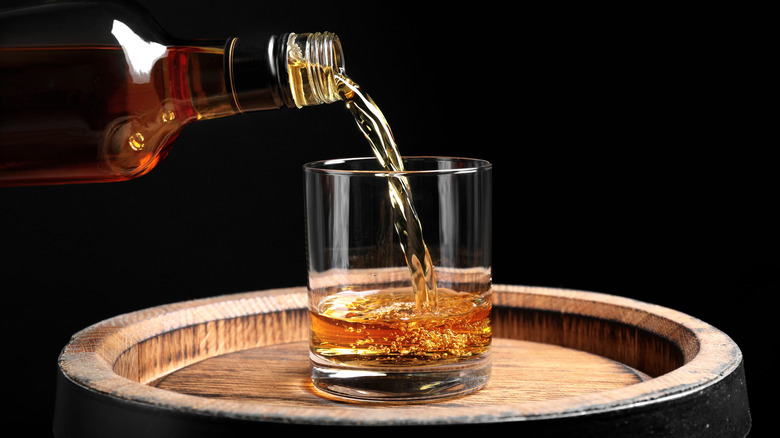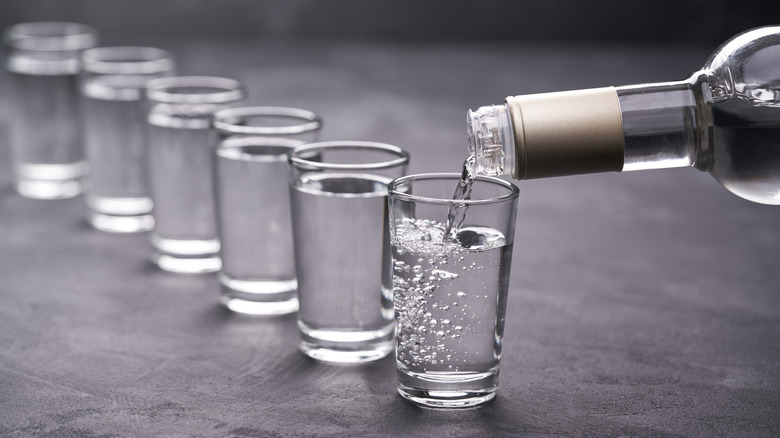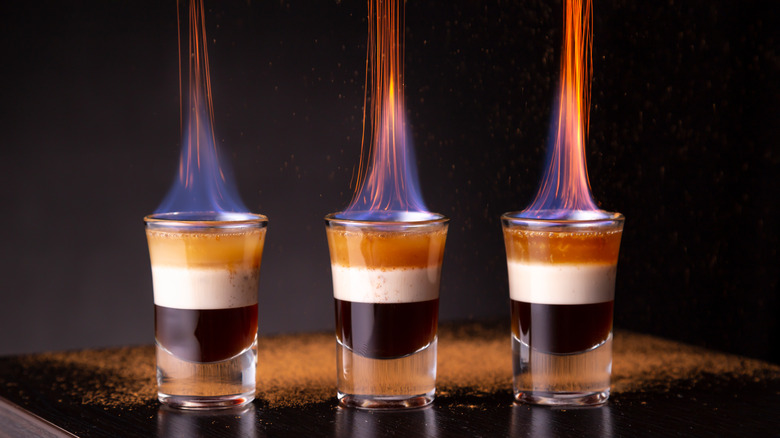Here's What It Means When Alcohol Is Overproof
If you're a fan of going out for cocktails, you've probably seen menus that describe a drink's spirit as "overproof." Or maybe you've been to a liquor store and saw overproof rum or gin and wondered what distinguished it from the other bottles on the shelf. Ultimately, the answer is short and simple: Overproof spirits are just stronger than standard spirits.
To be considered "overproof," a spirit needs to contain at least 50% alcohol by volume, compared to around 40% for most regular spirits. The most common kind of spirit to be sold as "overproof" is rum, although it could theoretically apply to any spirit that's 50% ABV or stronger, and these days you can find an increasing number of overproof whiskeys and gins. You may also see overproof whiskey described as "barrel strength" or "cask strength," and when specifically referring to gin, "navy strength."
Of course, the higher-than-average alcohol content is part of the appeal, allowing pro and home bartenders to give their cocktails an extra kick. But overproof liquor is also considered to be stronger and richer in flavor than standard varieties, and for certain kinds of cocktails, it's an absolute must.
Overproof? Prove it
Let's break down the terminology a little further: In the context of alcoholic drinks, "proof" is a term that refers to a spirit's strength, measured in alcohol by volume (ABV). So, "overproof" ultimately just means "extra strong." Proof is simply the ABV times two, so if a rum is 55% ABV, it's 110 proof. That goes for the U.S., anyway — other countries' regulatory systems have different formulas for calculating proof. Navy strength gins typically have a floor of 57.15% ABV, which in the British system is 100 proof.
To back up even further, the British navy may actually be where the term "proof" comes from. Different sources tell the legend differently, but in any case, it had to do with mixing liquor with gunpowder and seeing if the mixture would ignite. If it did, it was considered "proved." Some believe the purpose was to ensure that, in case a bottle broke and the liquor supply began to seep into the store of gunpowder, it would still be usable (which is to say, flammable; being contaminated by an inflammable liquid could make the gunpowder unusable). Others say the test was used by sailors to make sure liquor was as strong as advertised and not watered down by a slimy merchant.
Light 'em up
Probably the best-known use for overproof spirits is any kind of drink that's set aflame, like a scorpion bowl or the Southern cult favorite Flaming Dr. Pepper. As medieval British sailors knew, a high alcohol content is necessary for the liquid to catch fire. (Bacardi 151 was probably the best-known overproof spirit out there, until it was discontinued in 2016. The company website implies that fire safety was the reason for nixing the extra-strong rum).
But overproof spirits aren't just for burning things. Beverage professionals appreciate that whatever flavors are present in an overproof spirit are amplified, so many cocktail bars offer modified classic or original concoctions built around the extra-strong spirits. And of course, overproof spirits, especially rum, have an important place in the world of "tiki" drinks, often featuring as an ingredient in or floated on top of icy, fruity beverages. If you're not afraid of strong flavors (and you've eaten enough to handle your liquor), try it in place of a standard spirit the next time you make a cocktail and see for yourself how the higher proof changes the experience.


